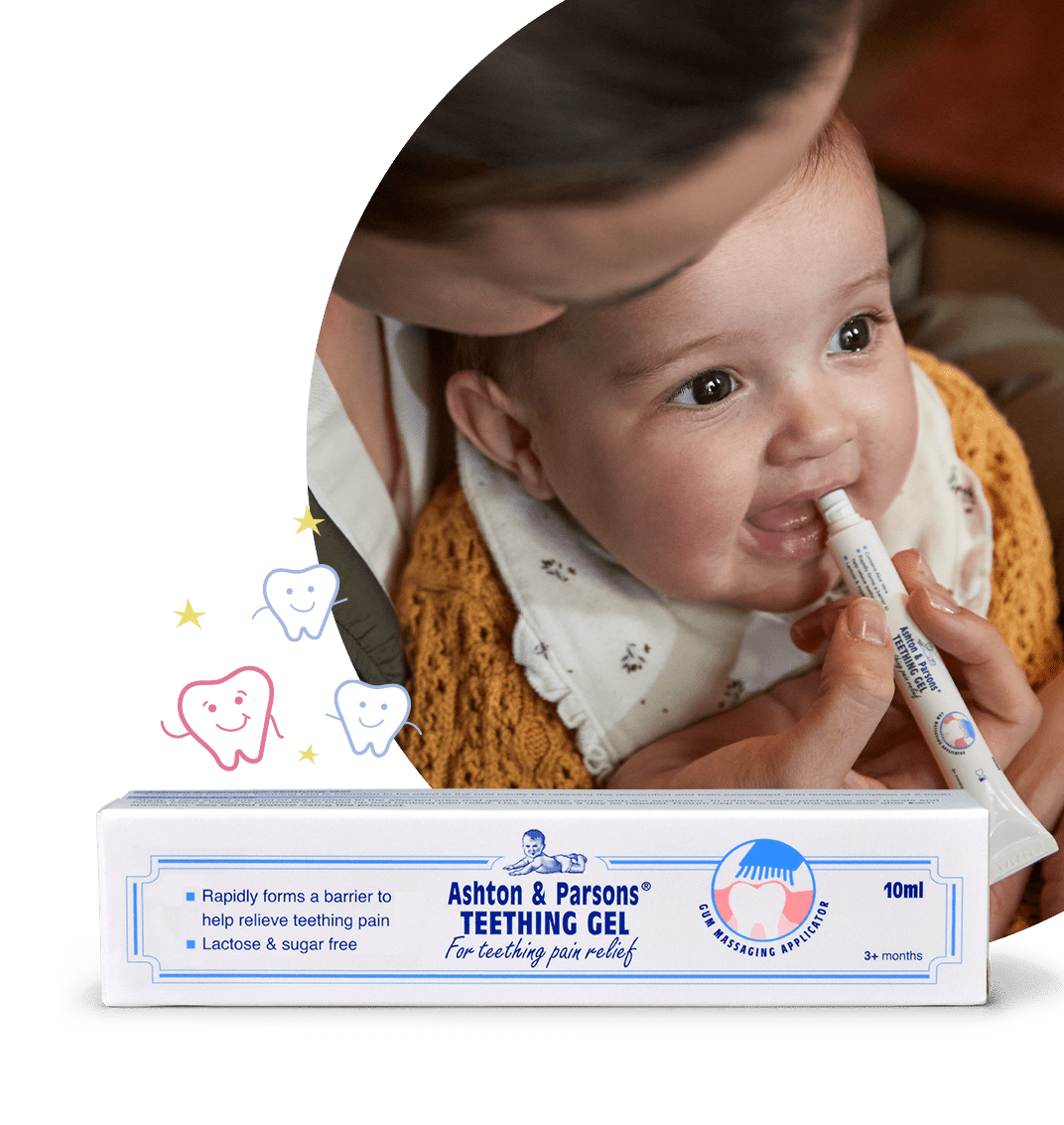Top teething tips
For many babies, teething is tough. As new teeth push up and start to emerge, little gums become swollen and tender.

Sometimes you can see or feel the swelling of a new tooth bud. Other teething signs to look for include:
1) Loss of appetite
Eating and breastfeeding stimulates blood flow to your baby’s mouth, which can make sore gums even more sensitive. So your baby might not want to eat as much as usual. Anything touching your baby’s mouth may not be tolerated.
2) Restlessness and irritability
If your baby’s gums are hurting, they’re likely to be irritable and unhappy. Add to that difficulty going to sleep and some nights of unsettled sleep due to the discomforts and it’s easy to understand why your little one is tired and grumpy*.
*Clinical Knowledge Summary. (2009). Teething. Last accessed 12th July 2015.
3) Chewing hard objects
Chewing down on blocks, your fingers, toys or anything else they can grab gives a little relief. Biting may become apparent at this stage too.
4) Lots of drooling
The tell-tale dribble can cause a rash around your baby’s mouth, chin and neck.
5) Flushed cheeks
As teeth push through the gums, irritation can cause one or both of your baby’s cheeks to become red and flushed.
Playtime and cuddles
Sometimes the distraction of a toy or playtime with mummy or daddy will be enough to take your baby’s mind off their teething pain. Many babies just want to be held and soothed by comforting cuddle power.
Teething toys or rings
Made to satisfy your baby’s natural instinct to chew on something, teething toys and rings can often be chilled in the fridge for an extra soothing effect. It’s recommended to sterilise them in boiling water first.
If you don’t have a teething ring, a cold wet flannel can work just as well. Older babies can chew on chilled sticks of vegetables such as carrot or cucumber, or a crust of bread, in younger babies this could be a choking risk so is best avoided. It’s best to avoid foods that contain added sugar, including rusks.
Dealing with dribble
Constant dribbling can make your baby’s chin sore. A ‘neckerchew’ is a useful way to catch dribble and wipe baby’s mouth which has a chewable section too. An emollient or barrier ointment can also be applied to baby’s face to prevent the skin from drying out.
Singing
Singing lullabies and nursery rhymes to your little one can really soothe a baby to sleep.
Medicines
There are a variety of medicines that can also be used to help relieve the discomfort of teething symptoms:
- Ibuprofen or paracetamol suspensions*
- Topical, liquids and gels*
- Herbal traditional therapies such as teething powders and granules– including Ashton & Parsons Teething Powders, can be given hourly for up to 6 doses in 24 hours. Ashton & Parsons Teething Powders contains tincture of Matricaria, which is extracted from German Chamomile flower heads. Tincture of Matricaria has traditionally been used in Ashton & Parsons Teething Powders to relieve the symptoms associated with teething pain such as sore and tender gums, flushed cheeks and dribbling.
If symptoms worsen or persist after 7 days of using this product, a doctor or qualified healthcare practitioner should be consulted. Always read the label
If you are unsure about your diagnosis please speak to your GP or Pharmacist.
*Check the age range and dosage information on the packet or ask your doctor or pharmacist if you’re unsure how much to give your baby.





